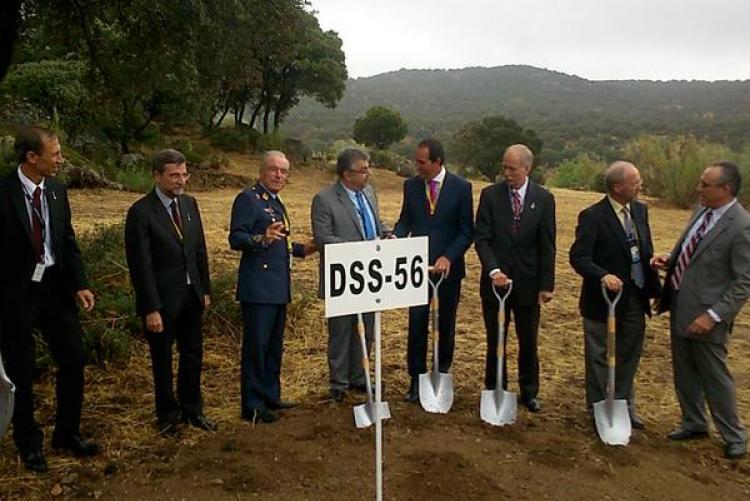On September 16th, a commemorative event will be held at the Robledo de Chavela Space Center (Madrid) to honor the 50th year of operations of the Madrid Deep Space Communication Complex (MDSCC) and to lay down the cornerstone of the new antennas.
The event will be attended by civilian and military officials and by representatives from the aeronautics and space industries, as well as by various media outlets. Also present will be the mayors of the towns of Robledo de Chavela, Navas del Rey y Colmenar del Arroyo, as well as NASA and Jet Propulsion Laboratory representatives. Opening the ceremony will be the Managing Director of INTA, Mr. Ignacio Azqueta Ortiz, the CEO of ISDEFE, Mr. Francisco Quereda, and the center’s director, Mr. Pablo Pérez Zapardiel.
The program will include the presentation of a commemorative video that will highlight the space center’s most significant activities and milestones over the course of its history. A plaque commemorating the 50th anniversary will also be unveiled. The officials in attendance will then proceed to lay the cornerstone for the structure that will house the new antennas.
This activity is part of the recent approval by the Council of Ministers to extend the Scientific Cooperation Agreement between Spain and the United States involving the NASA tracking station. Since 1964 our two countries have worked closely to track satellites in an effort to promote space sciences. The Madrid Deep Space Communication Complex, which is part of the worldwide Deep Space Network (DSN), is engaged in tracking satellites, spaceships and orbital telescopes, such as Hubble. It is also involved in various programs to search for exoplanets and in new missions to explore the solar system, such as Mars Odyssey and Mars Reconnaissance Orbiter.
Over its five decades of operation, the complex has helped bolster the space science industry and it provides an example of development in new fields like science, aeronautics and new technologies. To this end, NASA will make significant investments totaling some one hundred million euros, including the new, 70-meter diameter antennas that will replace those already in use.

